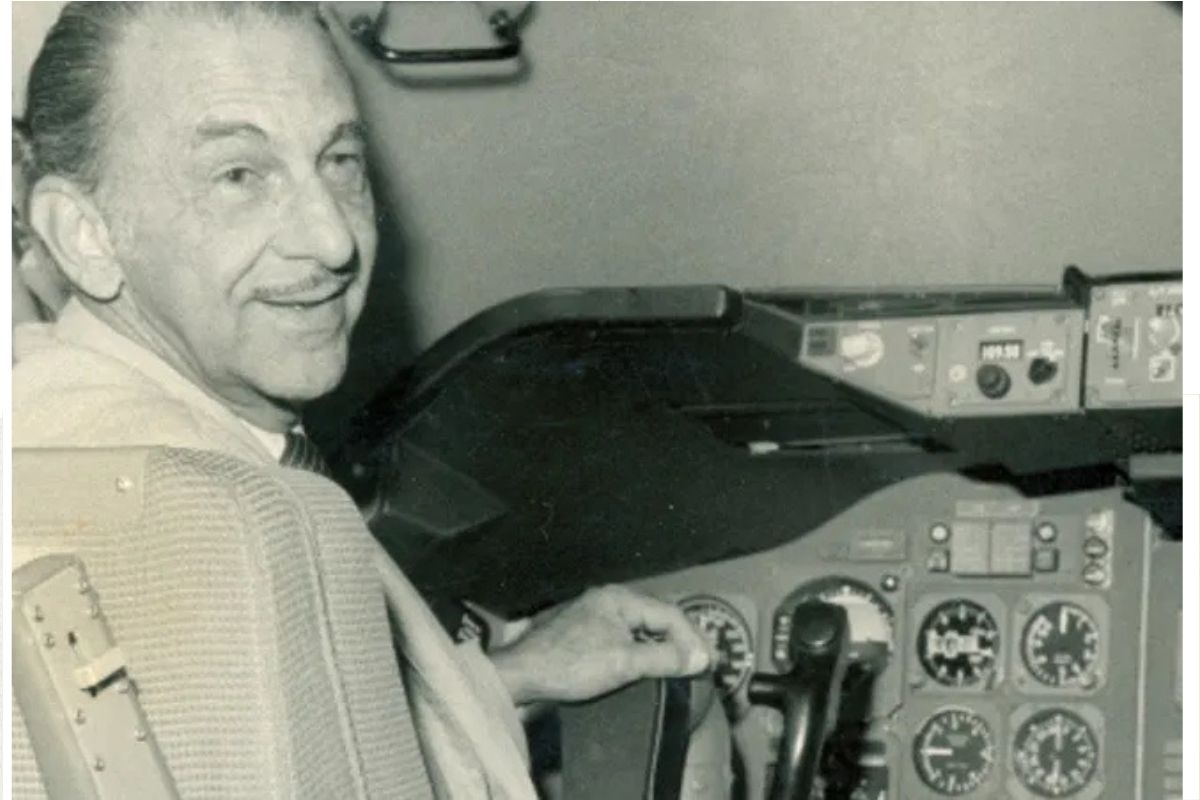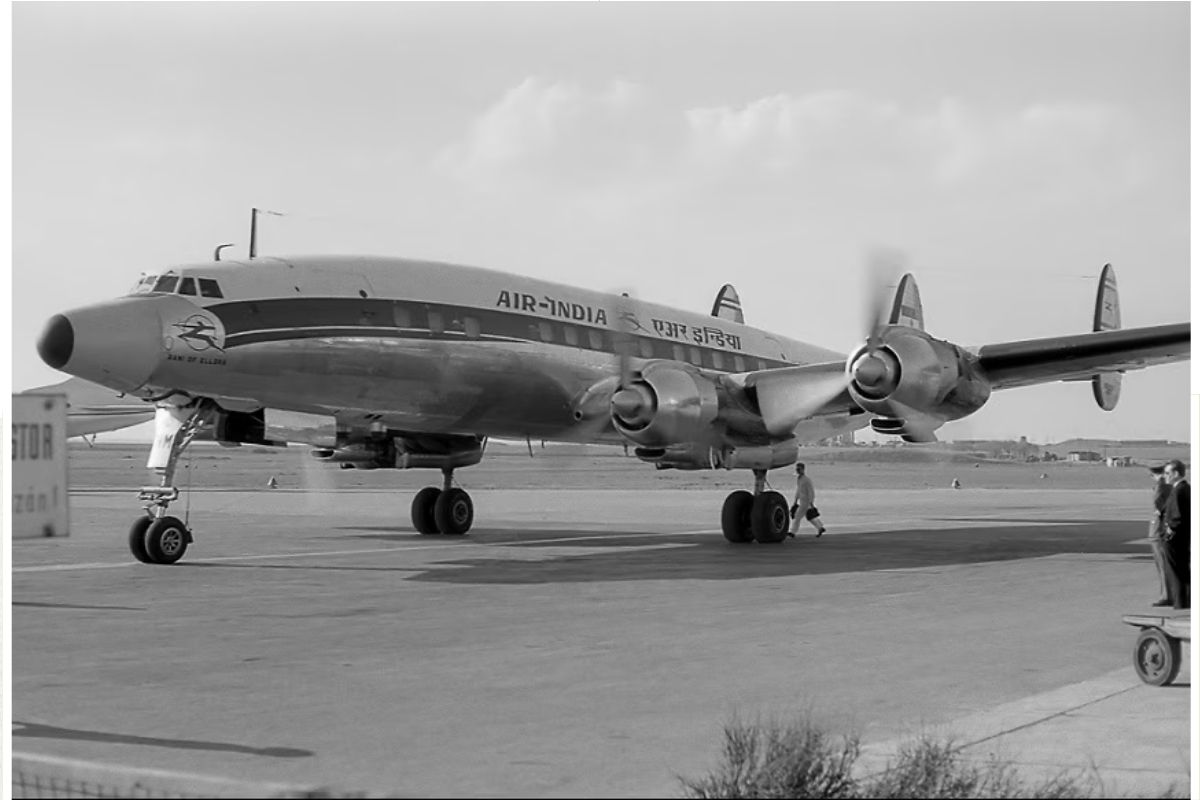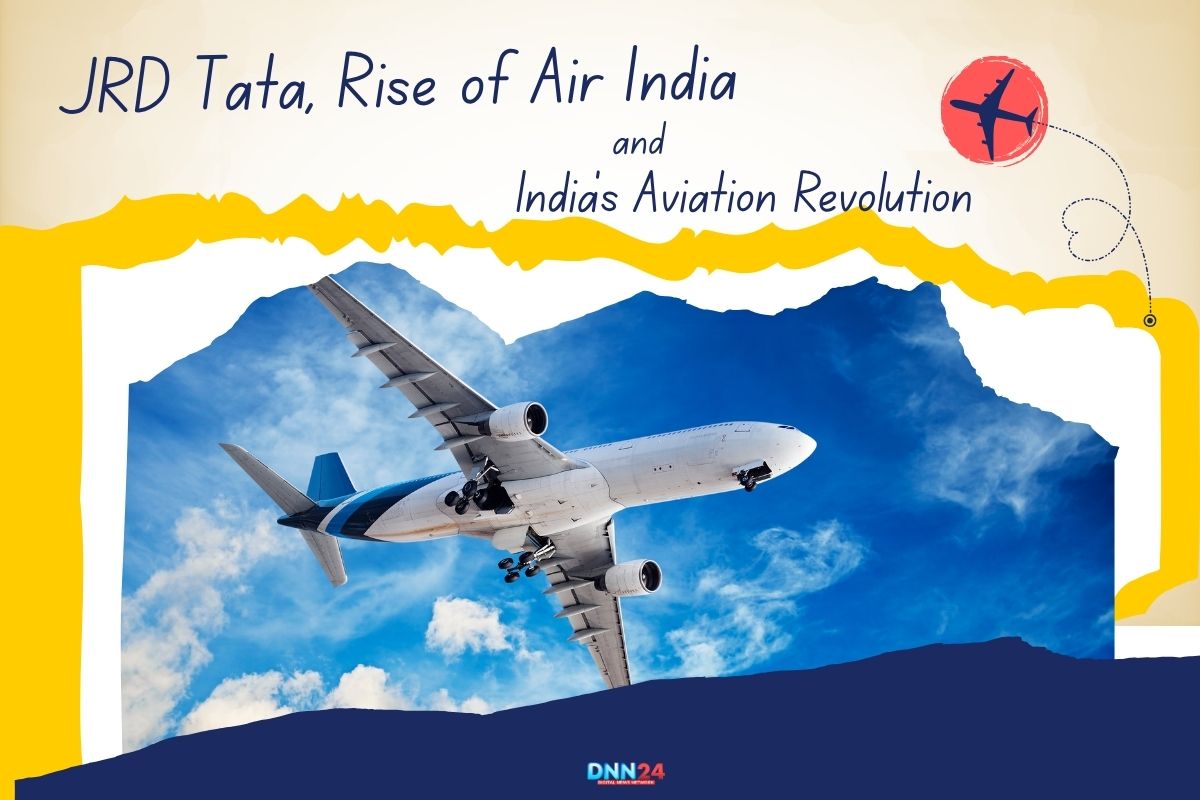JRD Tata’s dream of connecting India through the skies would soon transform into Air India, reshaping the nation’s aviation destiny forever. It was another balmy morning in October 1932; the sleepy airfield at Karachi was the venue of a scene that would alter the fate of skies in India. A young, determined Jehangir Ratanji Dadabhoy Tata, fondly known as JRD Tata, stood beside a modest single-engine De Havilland Puss Moth, preparing for a journey that was as much about hope as history.
Being only 28 years old, yet the heir to the famous Tata family, JRD was not just an ordinary fervid aviator, but due to that fact, he was the owner of the first pilot license issued to an Indian citizen. When he stepped in the cockpit, he carried the burden of anticipation and enthusiasm on his shoulders, not only on them but on the shoulders of an entire nation waiting impatiently to move on and feel proud.

It was not a flight like any other flight. The Puss Moth, carrying 25 kilograms of precious airmail, was embarking on the first commercial flight by an Indian airline, linking Karachi to Bombay (now Mumbai) and then onward to Madras (now Chennai). With the engine’s hum and the wind’s whisper, JRD soared into the sky, carving a path for India’s aviation dreams.
The trip was not blemish less, but that is another story as JRD fought against the headwind, had to contend with the heat, and even fought off an unwanted bird that managed to fly into the cabin. By the time he landed at Bombay’s Juhu airstrip at 1:50 pm, history had been made, and the foundation stone of Air India, then Tata Air Services, was firmly laid.
JRD Tata: The Visionary Behind the Wings
The story of Air India is inseparable from the life and vision of JRD Tata. Being born with the spirit of adventure and innovation, JRD, as a little boy, was fascinated with the wonders of flight. His aviation journey began in earnest on February 10, 1929, when he earned India’s first-ever flying license—a testament to his pioneering spirit. To JRD, however, flying was more of a personal passion and his mission to unite people, places, and possibilities in a very expansive and diversified land.

When Tata Air Services was established in 1932, JRD embarked upon the task of establishing the first commercial airline in India, based in a small hut with a thatched roof at the Juhu airport. The obstacles were huge: weak infrastructure, unpredictable weather, and the challenge of gaining people’s confidence in a different mode of transport.
Nevertheless, JRD’s perfection and attention to detail in each step and perpetual quest for excellence defined the airline’s culture. He used to lurk and visit the workplace without any prior announcement, and he made sure that nothing in the operation was fulfilled and maintained high standards. His kind of leadership was not business expertise, but it was to create pride and a sense of purpose within his team.
The First Flight: Trials, Triumphs and Tales Untold
Its first flight on October 15, 1932, was a matter of valour and creativity. When the Puss Moth lifted off the Draghi Road Aerodrome at Karachi, it was transporting more than letters; it was taking off with the hopes of an entire nation still under colonial rule. The journey was well thought out, with a vital fueling point at Ahmedabad, where, in a time warp scene, fuel was transported by bullock cart. The flight later proceeded to Bombay through stormy weather and technical uncertainties.

Most people are unaware of the emotional baggage that JRD had with him on this trip. He did not merely fly a plane, but he was flying in the dreams of a zillion Indians who just wanted their country to fly high. The unassuming Puss Moth piloted at 100 mph, became an icon of self-respect and aspiration. Ordinary people were cheering the flight’s success as much as the Tata family saw the dawn of a new era in that flight. Within the first year, the airline had flown 160,000 miles, 155 passengers and shipped nearly 10 tons of mail to much profit and to demonstrate that Indian enterprise could just as well compete with the best in the world.
Building an Empire: From Tata Airlines to Air India
The explosive growth and inventions characterised the years that succeeded the first flight in history. In 1938, Tata Air Services was transformed into Tata Airlines, and the aircraft started operating to Delhi and Colombo. The airline’s fleet became larger, and the reputation became a part of the company regarding reliability and other services. In World War II, Tata Airlines was instrumental in the Allied war effort; the airline flew troops, supplies and refugees, demonstrating its operation’s high standards and national service.

In 1946, as India stood on the cusp of independence, Tata Airlines became a public limited company and adopted the name Air India. Two years later, Air India launched its first international service, becoming the first Asian airline to operate transcontinental flights between Bombay, Cairo, Geneva, and London—a bold statement of India’s arrival on the global stage. The airline’s iconic centaur logo, personally selected by JRD Tata, symbolized grace and aspiration.
The Spirit of Innovation, the Jet Age and the Maharaja.
Air India’s journey is dotted with fascinating milestones and colourful anecdotes. The airline became the first one to present to the world such a mascot as a maharaja, which was a kind of Indian hospitality and charm. The Maharaja soon became synonymous with Air India’s promise of luxury and warmth, enchanting passengers worldwide. The airline was going further and further, being the first Indian carrier to fly jet aircraft in 1962 and, at an unbelievable, first, an all-jet carrier worldwide.
Air India’s spirit of innovation extended beyond technology. In 1967, the airline also gave its first-class passengers a Salvador Dali surrealist ashtray, which expressed its shallowness with the extraordinary. The airline’s commitment to excellence attracted luminaries from all walks of life, including a young Rajiv Gandhi, who later became India’s Prime Minister but began his career as an Air India pilot.
Unheard Stories: The Stories of The Legend
Behind Air India’s soaring success lay the dedication and dreams of countless unsung heroes. The ground staff, the mechanics who worked through the night so the planes could be airworthy, and the pilots who had to fly in unknown skies all left a legacy that the airline boasts of. One lesser-known story is that of Nevill Vintcent, a former Royal Air Force pilot and close friend of JRD Tata, who played a pivotal role in the airline’s early days, often piloting the Madras leg of the inaugural route.

The airline’s rudimentary introduction, with its then primitive place of operation—a hut constructed of thatch at the Juhu airfield—the use of a bullock cart to transport the fuel, and a small number of workers, cannot even be compared to the magnitude of the global operation that Tata Airlines will grow to be. Yet, it was this very simplicity, grounded in Indian values and ingenuity, that became Air India’s greatest strength.
Air India in the Modern Era: Challenges and Comebacks
The post-independence years saw Air India declared as the national airline in 1953, a move that brought both prestige and challenges. In October 1971, the airline launched an international service based on a luxurious Boeing 747-200B named Emperor Ashoka, which gave it a global presence, and it was also known as the Palace of the Sky because of its lavish services. Air India’s role in the world’s largest evacuation during the Gulf War, bringing home over 111,000 Indians, is a testament to its enduring commitment to the nation.
This process was not smooth, though. The airline’s difficult financial status, new management, and shifts in market dynamics tested its toughness. In a historic turn of events, Air India returned to the Tata fold in 2022, rekindling the spirit of its founding years and promising a new era of transformation and excellence.
The Legacy Lives On: Air India’s Enduring Impact
Today, as Air India continues to connect India to the world, the echoes of that first flight in 1932 still resonate. The saga of the airline is not necessarily the saga of planes and pilots but that of a nation undeterred and willing to dream. It is about JRD Tata’s unwavering belief in India’s potential, the countless men and women who turned vision into reality, and the millions of passengers whose lives have been touched by Air India’s wings.

From a single-engine Puss Moth to a fleet of state-of-the-art jets, from a thatched hut to global terminals, Air India’s journey is a saga of courage, innovation, and hope. The Maharaja smiles. Still, the skies call, and the tale of India’s first flight still touches or rather inspires the generations to reach the stars.
Also Read: From Mail to Milestones: The Story of India’s First Flight and the Birth of Indian Aviation
You can connect with DNN24 on Facebook, Twitter, and Instagram and subscribe to our YouTube channel.

